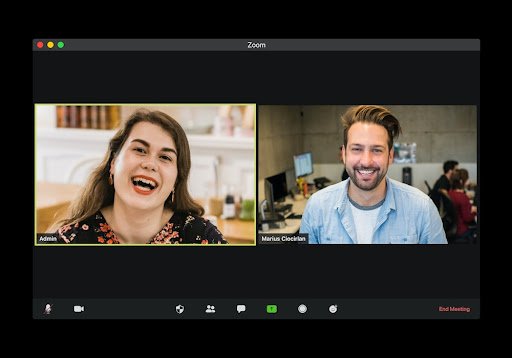- Introduction and overview
- What is qualitative research?
- What is qualitative data?
- Examples of qualitative data
- Qualitative vs. quantitative research
- Mixed methods
- Qualitative research preparation
- Theoretical perspective
- Theoretical framework
- Literature reviews
- Research question
- Conceptual framework
- Conceptual vs. theoretical framework
- Data collection
- Qualitative research methods
- Interviews
- Focus groups
- Observational research
- Case studies
- Surveys
- Ethnographical research
- Ethical considerations
- Confidentiality and privacy
- Bias
- Power dynamics
- Reflexivity
- How to cite "The Ultimate Guide to Qualitative Research - Part 1: The Basics"
Interviews: Research methods and approaches
As a qualitative research method, interviewing is widely used to gather in-depth information from participants about their experiences, opinions, and perspectives on a specific topic. There are various qualitative research techniques for interviews available to researchers to achieve the greatest potential in data collection.

This section will provide an overview of the importance of interviews, the different types of interviews, tools for conducting interviews, analysis of interview data, and ethical considerations in this research method. Note that the focus group interview is a related concept but will be discussed in greater detail in the next section of this guide, as focus groups have slightly different dynamics to consider.
What is an interview and its purpose in qualitative research?
Interviews, as a qualitative research method, play a key role in uncovering complexities in human behavior and decision-making. Researchers can observe behavior, on the one hand, or they can investigate the perspectives and values informing that behavior by interviewing research participants.
Purpose and importance
Interviews allow researchers to collect data on the subjective experiences of individuals, providing insights that may not be accessible through other research methods. They illuminate people's perceptions, thoughts, feelings, and understandings about a particular phenomenon. Data representing these views can form the foundation for identifying recurring themes regarding that phenomenon.
Unlike quantitative methods, which typically collect numerical data that can be statistically analyzed, interviews capture rich, detailed data in the form of words, ideas, and themes. They allow researchers to collect data on people's experiences in a manner that is sensitive to the context and the individual's perspective. Through interviews, researchers can explore the meanings people attribute to their experiences and gain a deeper understanding of the phenomena being studied.
Interviews also empower participants by giving them a voice. The interviewee has the opportunity to express their views, feelings, and experiences in their own words. This participatory aspect of interviews underscores the respect for individual experiences and perspectives, which is a central tenet of qualitative research.
Comparing interviews with other methods
While interviews share many similarities with other qualitative methods, they also have unique features that set them apart. Unlike interviews, methods like observations are more passive and rely more on the researcher's interpretation of events.
On the other hand, interviews actively involve participants in the data generation process. Compared to surveys, which may limit responses to predetermined choices or word limits, interviews allow for open-ended responses and the flexibility to explore topics in depth.
However, it's worth noting that interviews do not have to be a stand-alone method. They are often used with other methods, such as observation or document analysis, in a multi-method or mixed-methods research design. This combination of methods can enhance the richness and credibility of the data collected, providing a more holistic understanding of the research problem.
What are some examples of interviews in research?
The qualitative research interview can be conducted in various formats, each with its own strengths and limitations. Choosing the appropriate type of interview to use largely depends on the research question, the nature of the topic, the characteristics of the participants, and the resources available to the researcher.
Face-to-face interviews
In-person interviews are often considered the traditional form of interviewing. They involve a direct conversation between the interviewer and the interviewee. This form allows for comprehensive communication as it includes verbal and non-verbal cues such as body language, facial expressions, and tone of voice.

This type of interview allows for immediate clarification of responses and can help foster rapport between the interviewer and interviewee, which may lead to richer, more nuanced data. However, these kinds of interviews can be time-consuming, expensive, and limited by geographic location.
Telephone interviews
Telephone interviews can be a practical alternative when face-to-face interviews are not feasible due to distance, time, or budget constraints. Phone interviews allow researchers to reach participants who may be geographically dispersed and offer a level of anonymity that may encourage candid responses, particularly on sensitive topics.
However, they might lack non-verbal cues that can provide additional context to a participant's responses. A phone interview may differ from a conversation in person in that you can't see someone's face, gestures, or other body language, which might be useful for contextualizing detailed information.
Online/internet-based interviews
Online or internet-based interviews conducted through platforms such as Zoom, Skype, or email have become increasingly popular in recent years. They can be synchronous (occurring in real-time, like video calls) or asynchronous (participants respond in their own time, such as email interviews).

These interviews can reach participants globally, are often cost-effective, and can be more convenient for both the researcher and the participant. However, they rely on technology and internet access, which may not be available to all potential participants.
How to carry out great interviews in qualitative research
Qualitative interviews are more than just casual conversations. Some qualitative research interviews may not follow a strict structure and allow the researcher to explore any topics in the moment. In contrast, other interviews may be highly structured and aim to collect the same kind of information across participants. As a matter of empirical research, research interviews require careful planning, execution, and reflection to ensure they yield valuable and trustworthy data. Here are some key components to consider:
Developing appropriate interview questions
The foundation of any successful interview lies in its questions. Good interview questions are open-ended, clear, and directly related to the research objectives. They should allow participants to share their experiences, opinions, and feelings without leading them toward certain answers. In qualitative research, it's often useful to have a mix of more and less structured questions, allowing for both depth and breadth in responses.
Building rapport with participants
Establishing rapport with interviewees encourages open and honest responses. In-depth interviews can be challenging if the interviewer doesn't know the interviewee in detail or hasn't established the necessary trust.

Researchers establish rapport with interviewees by displaying empathy, active listening, and respect. Clarifying the purpose of the interview, ensuring confidentiality, and asking for consent before beginning can also help in building trust.
Note-taking and recording
Accurate and comprehensive documentation of interview data is critical. While audio or video recording is highly recommended for completeness and accuracy, it's also beneficial to take notes during or immediately after the interview. These notes can capture non-verbal cues, the interviewer's impressions, and any issues or incidents that occur during the interview.
Ethical considerations
Ethical considerations are paramount in any research involving human participants. Researchers must obtain informed consent, respect participants' privacy and confidentiality, and ensure participants understand their right to withdraw from the study at any time without any negative consequences. It's also important to be aware of power dynamics and strive for a respectful and equitable researcher-participant relationship.
The effectiveness of a qualitative interview largely depends on the thoughtfulness and rigor with which these components are addressed. Interviews are not just a data collection tool; they are a way of acknowledging and respecting participants' lived experiences and perspectives. Therefore, each component should be handled with utmost care and consideration.
Fundamental types of interviews
The structure of an interview can greatly influence the data collected. The level of structure varies along a continuum, with structured and unstructured interviews occupying opposite ends of that spectrum.
Unstructured interviews
Unstructured interviews are characterized by their flexibility. The researcher usually only has a list of topics or themes to be covered, known as an interview guide, but the conversation does not follow a predetermined set of questions. Instead, the interviewer allows the conversation to flow naturally, following leads provided by the interviewee. An unstructured interview is particularly useful when the researcher is exploring a new area of study and aims to gather as much information as possible without preconceived notions.
Semi-structured interviews
Semi-structured interviews strike a balance between flexibility and structure. The researcher has a list of predetermined questions to conduct interviews but is free to ask additional open-ended questions or to deviate from the list based on the interviewee's responses. The semi-structured interview is the most common form of interview in qualitative research, as it provides deep, rich data while still ensuring that all necessary topics are covered.

Structured interviews
Structured interviews, sometimes called standardized interviews, are the most rigid form of interview. The researcher asks the same set of predetermined questions in the same order to all participants, with little to no deviation.
While a structured interview may limit the depth of data collected, it allows for greater consistency across interviews. This can be helpful for keeping responses confined to the research topic and comparing responses between participants.
In determining the level of structure for an interview, researchers should consider their research objectives, the nature of the topic, and the characteristics of the participants. Different structures lend themselves to different research goals, and the most effective interviewers are those who can adapt their approach based on the needs of their study.
Process of conducting an interview
Conducting an interview in qualitative research involves a series of well-planned steps before, during, and after the interview. These steps ensure that the process is systematic, ethical, and capable of yielding high-quality data.
Pre-interview preparation and research
Before conducting the interview, the researcher needs to thoroughly understand the research topic, define the purpose of the interview, and identify potential interviewees. Preparing an interview guide with key themes or questions is essential, though the level of detail will depend on the interview structure. Logistics, such as scheduling the interview at a convenient time and place for the participant and ensuring necessary equipment is available and working, also need to be addressed.
Conducting the interview
The interview begins with an introduction in which the interviewer explains the purpose of the interview, assures confidentiality, and obtains consent from the participant. Throughout the interview, the researcher should aim to build rapport, listen attentively, and adapt their questioning based on the interviewee's responses. Non-verbal cues should also be observed and noted, as they can provide additional insights.
Post-interview activities
After the interview, it is important to thank the participant for their time and contribution. Researchers should then promptly transcribe the interview while the details are still fresh.
Reflections and observations about the interview should also be noted, including the context, the behavior of the participant, and any unexpected occurrences. These notes can provide valuable context during data analysis.
Executing each of these stages effectively requires not only good planning and organization but also interpersonal skills, flexibility, and respect for the participant. The quality of the data collected during an interview is largely dependent on how well the interview process is managed.
Transcribing interviews
The transcription of interview data is a critical step in the qualitative research process. This involves converting the recorded audio or video interviews into written text, providing a detailed account of the dialogues that took place during the interviews.

Transcriptions allow for more detailed examination, analysis, and reporting of the data. However, making transcriptions can be arduous and time-consuming. Here are some key considerations in the transcription process:
Types of transcription
There are two main types of transcription: verbatim and clean. Verbatim transcription involves writing down every single word, pause, and utterance made during the interview. This is a very detailed and time-consuming process, but it can be useful when the researcher needs to analyze not just the content of the interview but also the way it was expressed. On the other hand, clean transcription omits irrelevant elements like stutters, repetitions, and filler words, focusing instead on the core content of the conversation.
Manual vs. automated transcription
Researchers may choose to transcribe interviews manually or use transcription software. Manual transcription, while time-consuming, allows researchers to become intimately familiar with the data and can be more accurate, especially for complex or nuanced dialogues.
Automated transcription software, however, can save time and effort, particularly for large volumes of data, although it may require manual checking and correction for errors. Some researchers choose a hybrid approach, using software for the initial transcription and then manually checking and correcting the output.
Formatting and anonymizing transcripts
To facilitate analysis, transcripts should be formatted consistently, with clear identifiers for different speakers and timestamps for reference. If there are multiple interviewers or participants, each individual's speech should be clearly marked. Additionally, to ensure confidentiality, any personally identifiable information should be removed or anonymized in the transcript. This is especially important to consider in qualitative data, because participants may talk about aspects of their lives through which they could be identified, for instance if they mention specific names, their neighborhood, or place of work.
Quality checks
Finally, it's important to check the quality of the transcript. This could involve a second person checking the transcription against the audio or the researcher re-listening to portions of the recording to confirm accuracy. Any unclear or inaudible sections should be marked in the transcript.




